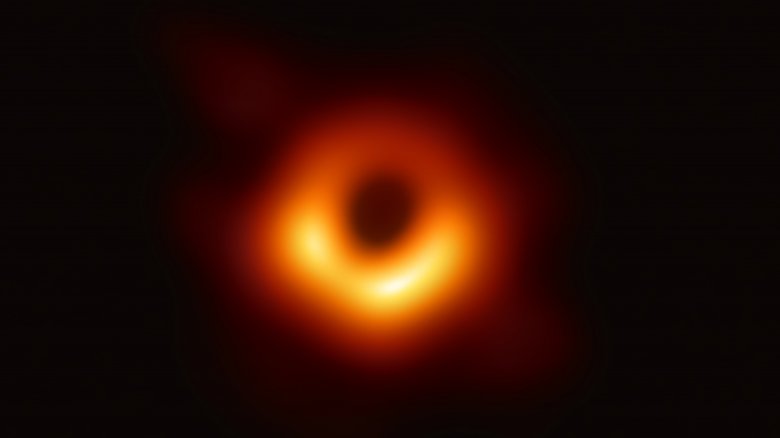Our Galaxy's Supermassive Black Hole Might Be Up To Something Weird
So the first thing we all thought when we heard there was a supermassive black hole at the center of the Milky Way galaxy was, "Dang. So it's really only a matter of time before we all get sucked into that thing, right?" Because we've all seen the movies. Black holes equal 1) Getting sucked in and dying or 2) Getting sucked in and not dying but ending up in some really lame alternate dimension where everyone has goatees and ulterior motives.
Scientists have offered comfort, like this note from ScienceDaily, which assured us that we have "little to fear" from the black hole — called Sagittarius A* — because of how far away it actually is (there are roughly 24,000 light-years of deep space between us and it). Never mind that all those movies have basically taught us that the thing is just taking its time as it sucks up solar system after solar system and draws us ever closer, but whatever. Anyway, ScienceAlert says the thing is usually "relatively quiet," with "low key" activity and "minimal fluctuations in its brightness."
Until now. Yes, recent black hole activity has been suspiciously not-low key. In the summer of 2019, scientists watched it grow 75 times brighter than usual before dimming again to its usual level of brightness. So did it gobble up a solar system, then? An alien spacecraft? Did some extraterrestrial culture attempt to close the door? No one knows for sure ... yet. But the going theory appears to be that something got close enough to be drawn in by Sagittarius A*'s gravity, possibly the star S0-2, which doesn't appear to have actually fallen into the black hole, but may have given up some of its gas to the abyss.
Until scientists gather a little more data, though, they're not going to really know. ScienceAlert says researchers are still awaiting data from across a broad range of wavelengths, and data needs to be consolidated from other telescopes, too. A complete analysis of all the available data will reveal more about the physics of what was happening when Sagittarius A* got brighter, and will allow scientists to make a much more educated guess. You know, so we'll all be ready when Sagittarius A* does finally drop us into the goatee dimension.
